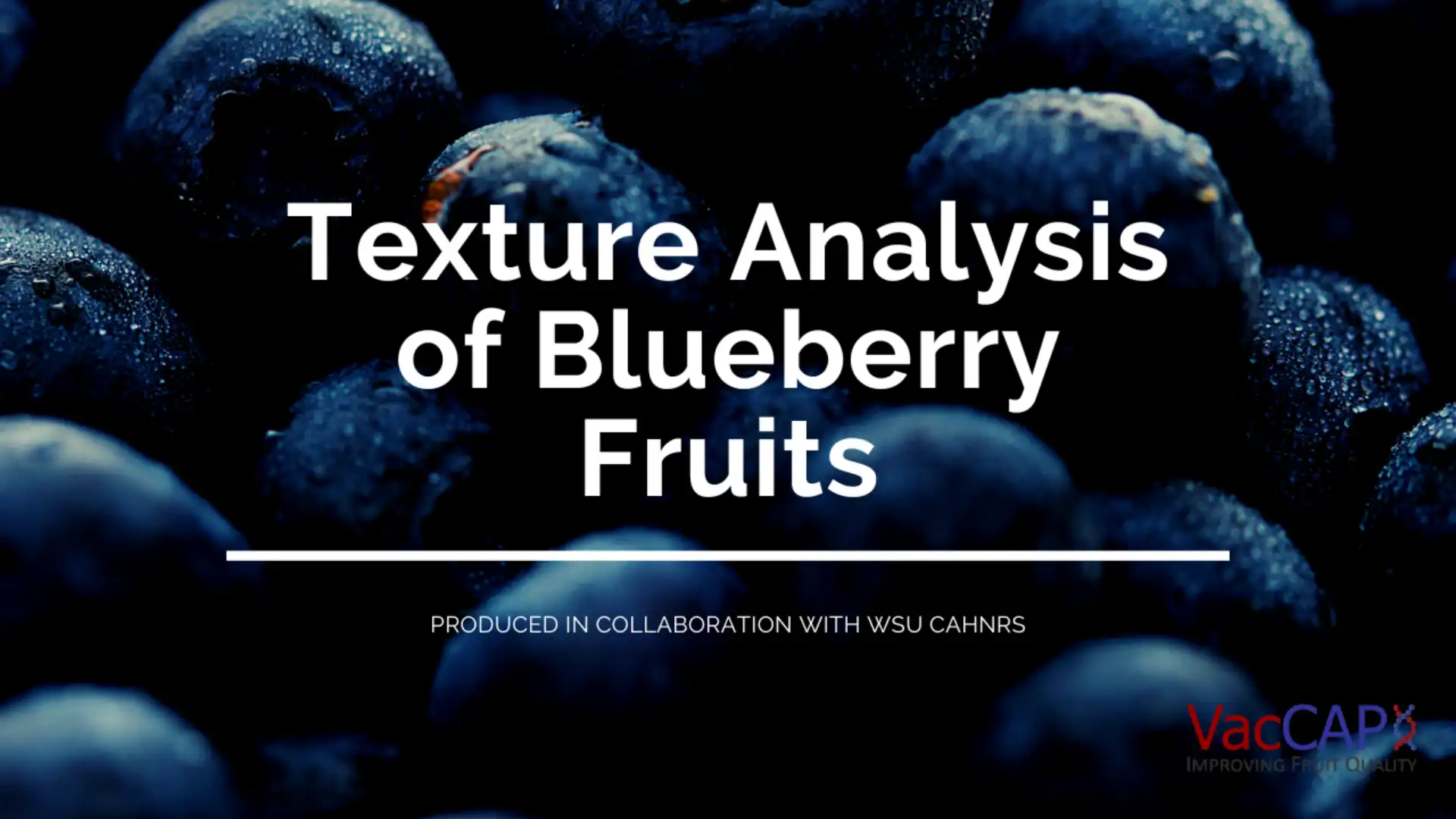In an impactful 60 seconds speech at the recent IBO meeting in Madrid (Fruit Attraction, 08/10/2024), Cort Brazelton (Co-CEO, Fall Creek) pointed out a roadmap to guide the blueberry growers to make their business more sustainable in the long term:
Have a five year plan. Know what markets you're going to serve and know what quality they want. What is my point of difference? What is my strategy to reduce my unit cost? What is my route to market going to be? Who will I partner with and how will I commit fully to that?
What is my process for assessing innovation, new genetics, new technology, you name it? What is my process for assessing that pre adoption and how will I scale it if and when it works? How do I stay on the front end of that innovation curve? And how am I going to manage my capital needs to do it?
If you don't have an answer to those things, I would say work on having an answer for the next 5 years.
Cort Brazelton
As a blueberry grower looking to secure the long-term sustainability of your business, it’s essential to think ahead and plan strategically for the next five years. The landscape of agriculture, particularly within the berry industry, is evolving rapidly with new challenges and opportunities. Here’s a guide based on advice for assessing and improving the sustainability of your blueberry operation, focusing on critical aspects such as market strategy, innovation, partnerships, and cost management.
1. Develop a Clear Five-Year Plan
The first step toward ensuring the sustainability of your blueberry business is to have a clear five-year plan. The importance of strategic planning cannot be overstated. A solid plan provides a roadmap for your business, helps anticipate challenges, and prepares you to seize new opportunities as they arise.
Start by asking yourself key questions: Where do you want your business to be in five years? What markets will you serve, and how will you adapt to their demands? Understanding these elements will allow you to establish concrete goals and measurable outcomes to work toward.
2. Know Your Markets and Quality Requirements
The second fundamental step is to understand the markets you're going to serve and their quality expectations. The blueberry market is diverse, and customer needs can vary significantly depending on geography, consumer preferences, and distribution channels.
For instance, some markets may prioritize organic or sustainably grown berries, while others may focus on size, sweetness, or shelf-life. Establishing early on which markets you intend to target will inform the quality standards your operation needs to meet. You should ask:
- Which segments of the market are growing?
- How do different markets value quality, and what specific attributes are they looking for?
Aligning your production practices with market needs will give your operation a competitive advantage and open up more opportunities for premium pricing.
3. Define Your Point of Difference
One of the most critical components of your sustainability plan is identifying your point of difference. In a competitive market, differentiating your product can make all the difference in maintaining and growing your customer base. Ask yourself, What makes my blueberries unique?
Your point of difference could be tied to:
- The variety of blueberries you grow, such as introducing premium or niche varieties.
- Sustainability practices, such as organic farming methods.
- Product innovation, such as offering value-added products like packaged or ready-to-eat berries.
Defining and clearly communicating your unique value proposition will help your business stand out in crowded markets and build stronger customer loyalty.
4. Strategize to Reduce Unit Costs
Cost efficiency plays a critical role in the sustainability of any agricultural business. Identifying strategies to reduce your unit cost is essential for maintaining profitability, especially in times of price volatility or rising input costs.
Here are some strategies to explore:
- Improved labor efficiency: Automation and technology can help streamline labor-intensive tasks such as harvesting and packing.
- Increase the productivity per hectare: New varieties and new growing techniques should be explored to improve the yield per hectare.
- Precision agriculture: Using data and technology to optimize inputs like water, fertilizers, and pesticides can reduce waste and cut costs.
- Economies of scale: Expanding your operation or cooperating with other growers to purchase inputs in bulk can help reduce per-unit costs.
Focus on improving operational efficiencies to ensure your blueberries are produced at a competitive cost, allowing you to stay profitable even when market prices fluctuate.
5. Establish a Clear Route to Market
Your route to market is the bridge between your farm and your customers, and it needs careful consideration. Whether you sell directly to consumers, supply wholesalers, or work through retailers, your route to market will significantly impact your business's success.
When evaluating your route to market, consider:
- Distribution channels: Are you targeting local markets, national retailers, or international exports? Each route has different demands and logistical challenges.
- Direct-to-consumer (D2C): If you are a small grower and want to capture more value, you might explore direct sales through farmers' markets, online platforms, or subscription boxes.
- Partnerships: Working with established distributors or retailers will expand your reach but may also come with tighter profit margins.
Choosing the most efficient and effective route to market is crucial for reaching the right customers and maximizing your business potential.
6. Form Strategic Partnerships
The right partnerships can be vital to your business’s sustainability. Whether they are with suppliers, distributors, or even other growers, partnerships allow you to leverage collective strengths, share risks, and create new opportunities.
Ask yourself:
- Who are my key partners, and how can I deepen my relationships with them?
- How can I collaborate on marketing, logistics, or research and development to benefit both parties?
Building strong partnerships requires trust and commitment, but they can provide valuable synergies that enhance the overall sustainability of your business.
7. Assess Innovation, New Genetics, and Technology
To stay competitive and sustainable, you need a process for assessing innovation. The blueberry industry is continually evolving, with new developments in genetics, technology, and farming techniques emerging every year. It’s essential to stay at the forefront of these changes to maintain your competitive edge.
Start by asking:
- What innovations are relevant to my operation, and how can they improve my processes or products?
- How do I evaluate new genetics and technology before adopting them?
You’ll need a robust assessment process to decide whether an innovation fits into your business model. This could involve trialing new genetics on a small scale or implementing new technologies in one part of your operation before scaling up.
8. Scale Innovation When it Works
Once an innovation proves successful, the next challenge is scaling it effectively. Whether it’s new genetic strains or a new technology platform, scaling is where you realize the full benefit of your investment.
Consider:
- What infrastructure do you need to scale the innovation across your operation?
- Do you have the capital and resources to make the leap?
A structured approach to scaling innovation will ensure you can maximize its potential while minimizing risk.
9. Stay at the Front End of the Innovation Curve
Staying at the front end of the innovation curve means actively seeking out the latest trends, technologies, and practices in the industry. This proactive approach will allow you to anticipate changes rather than react to them, keeping your business ahead of the competition.
To stay informed, you could:
- Attend industry conferences, like those organized by the International Blueberry Organization (IBO).
- Collaborate with research institutions or participate in pilot programs.
- Monitor consumer trends and be ready to adapt your practices accordingly.
By positioning yourself as a leader in innovation, you will strengthen your business’s resilience and future-proof it against industry disruptions.
10. Understand Your Capital Needs
Finally, a key factor in sustainability is understanding your capital needs to achieve your goals. Innovation, scaling, and market expansion all require investment, and it’s crucial to have a clear plan for how you’ll meet these financial demands.
Consider whether you need:
- External financing: Are there opportunities for loans, grants, or equity investment?
- Reinvestment from profits: Can you earmark a portion of your revenue for reinvestment into the business?
Planning for capital needs will ensure you have the resources to implement your five-year plan and sustain growth.
Conclusion
Sustainability in the blueberry industry is about more than just surviving—it’s about thriving by planning for the future, innovating, and managing resources effectively. By developing a comprehensive five-year plan, focusing on market needs, embracing innovation, and ensuring cost efficiency, your blueberry business can not only survive but grow in an increasingly competitive market. Take the time to address these critical questions, and your operation will be well-positioned for success over the next five years.










